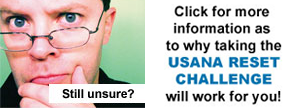Pain. Neck pain that travels to the shoulder, which travels to the rotator cuff, possibly down to the lats (latissimus dorsi), and now your aching back (either on the left, right, middle, parts or the entire area), oh, and let us not forget the knees, arches, ankles or the bottom of your foot whistling the happy tune of plantar fasciitis . This is defined as a painful foot condition caused by inflammation of the plantar fascia , the thick ligamentous connective tissue that runs from the heel to the ball of the foot. The pain is usually felt on the bottom of the foot near the heel and is worst when getting out of bed first thing in the morning or after sitting for a length of time. It is caused by too much pressure or trauma to the bottom of the foot – often resulting from wearing old, “dead” shoes or a weight gain. Recovery takes several weeks, aided by icing and taping of the foot and studies have shown, anti-inflammatories help reduce the inflammation process.
So why does everything hurt? Let us take a trip that began several years ago in your body!
GENES. How are you “built?” Built meaning do you have skinny ankles? Larger in the thighs? Wider shoulders? Narrower hips?? These natural factors have their place in how your body will act/react to certain movements. For example, those with the “skinny ankles” are more prone to having or creating knee/shin/ankle/arch pain due to muscular imbalances.
As time passes, our muscles begin to lengthen, bones start to form and harden, and we engage in a myriad of activities of course, and your body begins to like the positions they are being taught to be in, for example, sitting with a slouch. I bet you just sat up straight right now! Perhaps you have a corporate job, you drive a bus, you’re a student, or simply unaware of what you are teaching your body with every move (slouch) you make, or lack thereof and becoming a couch potato! Let’s get a little deeper into the teaching. Look at the children of today. Okay, let’s look at adults too! Both generations are the ones on the couch or rocker chairs engaging in endless hours of video gaming, music downloading, instant messaging, and there is no play or engaging in any physical activity. Now take a mental picture of the two scenarios- how is the body posture? You guessed it, slouchy! Can you remember being told by parents, and maybe now you are the parent doing the telling, “sit up straight, look respectful!” Or something similar to that! Now I was going to say do you remember being whacked on the back of the head with a newspaper or constantly nagged, while somebody screamed, “Sit up!” Of course I wouldn’t say that, this is a respectable article!! Oooh, back to the article!
MOVING FORWARD. Now the body is doing what is called compensating into that slouch position and you know what? The body has to work SO MUCH HARDER to keep you in that place, resulting in more/additional compensations that can travel around the entire body! FOLLOWING WITH~
COMPENSATIONS. Compensation is where the body acts differently than it was meant to, and let’s use the above example of the slouch. Your body wasn’t “made” to be in a constant state of this position, but once it’s there, things start to happen, like a domino effect. I’ll share more on this in a minute! Compensations occur in the musculature of the body. Compensations can happen in many places, over periods of time, they can leave one area of your body and travel elsewhere, but this is true of most compensations, one affects the other. Have you been to the chiropractor, been adjusted, and then were really sore the next day? This can be an example of compensation (on the other side of the spectrum) in that now your body is actually aligned how it was made to be, but you have been in the compensating slouch for too long, and now your body isn’t used to being “correct.” As a trainer there is an assessment performed with clients at the first meeting to find these compensations/imbalances spoken of. Try and imagine yourself standing in an upright position, now raise both arms above your head in a “put ‘em up” position. From here you would perform what we call an overhead squat, and that is because your hands are “overhead.” As you descend into this squat where the knees are supposed to bend, you begin to lean forward (knees are not bending much at all) like you’re bowing as if saying “we’re not worthy!” This “bow” is the movement of compensation. In many classes that I teach, when doing squats it is like clockwork that I will say, “Don’t bow to me; I am not your master.” To execute a squat safely and effectively requires the activation of many muscles, and if some are not working, the bow will occur, putting stresses on other muscles and joints (like the knees) to take over for the ones that aren’t working, resulting in compensation and pain. Here’s a very brief explanation as to this compensation, and please remember, everybody is different, so this reason for you, if this IS your scenario, can and may be tweaked depending on other muscular factors. Everybody is not made the same.
Simply stated: underactive and overactive muscles. The OVERACTIVE or WAY TOO TIGHT, and NOT FLEXIBLE muscles in the above-mentioned compensation pattern of the “bow” or forward lean generally are: claves (gastrocnemius), layered and smaller calf muscle underneath the gastrocnemius (soleus), hip flexor complex (psoas and iliacus, AKA iliopsoas), and the abdominal complex (rectus abdominus, AKA the 6-pack and the external obliques which are on each side of the 6-pack). The UNDERACTIVE AND NOT VERY STRONG muscles are: anterior tibialis (feel your shin bone and move your hand to the outer shin. The first “beefy” muscle you feel is the anterior tibialis), gluteus maximus (yes, the big part of your butt!), erector spinae (vertical muscles, 3 groups, up and down your spinal column and back, and one group looks like wings!!), and your intrinsic core stabilizers, (deep torso muscles). So with the OVERactive muscles, they need to be relaxed (lengthened) and deactivated so-to-speak, enough so they don’t take over for the underactive ones, and the UNDERactive muscles need to be strengthened. There! AND LET’S NOT FORGET~
FLEXIBILITY. Flexibility plays such a great part in body compensations. Flexibility begins in the joints and how well a range of motion is achieved through the muscles that surround the joint. Inactivity, not exercise, reduces flexibility. As joints tighten and your range of motion diminishes from normal, daily activities, you become more likely to pull or strain a muscle, particularly your back and hamstrings. Weak, tight back and trunk muscles are the most usual cause of most back pain. Can we stretch a little??
In brief, there are many compensatory patterns that can cause pain, and the good news? It can be corrected! Like any training protocol, learning how to write with your left hand because you broke your right hand, learning how to box southpaw instead of right-sided, learning to drive standard instead of automatic, learning how to change up your golf swing to get more power out of the drives, and yes, carrying your child with the other arm~ all these things need to be “unlearned and relearned,” and the body is fully capable, and more importantly, willing to do this! Now all you have to do is choose. Choose to continue in pain or take active and positive measures to live without the pain.
References
1.Micheal Clarke, DPT, MS, PT, NASM-PES. National Academy of Sports Medicine (NASM) Corrective Exercise Specialist, Carlsbad, CA, 2005.
2.Corn, Rodney. National Academy of Sports Medicine (NASM) “Using an Interpreting Movement Assessments,” http://www.nasm.org/downloads/Using_&_Interpreting_Movement_Assessments.pdf, 2002
3.Corn, Rodney. National Academy of Sports Medicine (NASM) “Putting the MAXIMUS Back in your GLUTEUS COMMON CAUSES OF DISRUPTION IN NEUROMUSCULAR EFFICIENCY” THOUSAND OAKS, CA, 2002






Speak Your Mind